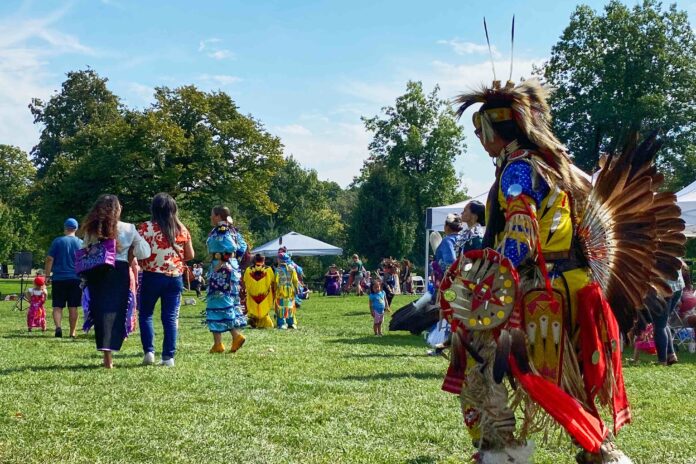
Between drummers, dancers, masters of ceremony and hundreds of attendees, a constant buzz was in the air at Vincent Massey Park as an Ottawa Indigenous youth organization threw its first-ever powwow on Sept. 21.
Powwows are a tradition originating from many Indigenous peoples that showcase cultures through activities such as drumming, dancing and feasts. This powwow was organized and attended by members of various Indigenous communities including First Nations, Métis and Inuit.
According to Assembly of Seven Generations (A7G) co-founder Gabrielle Fayant, what made this celebration unique was that, Indigenous youth were at the centre.
A7G, the powwow’s organizer, is a non-profit, community-led organization that aims to support Indigenous youth through cultural activities and weekly gatherings.
Fayant, who is also a powwow committee member, said this idea had been in the works for nearly a decade, and took years to come to fruition due to limited resources and capacity.
She recalls youth talking about powwows at a Friday night gathering in 2015 when one of them said, “We should do an A7G powwow.”
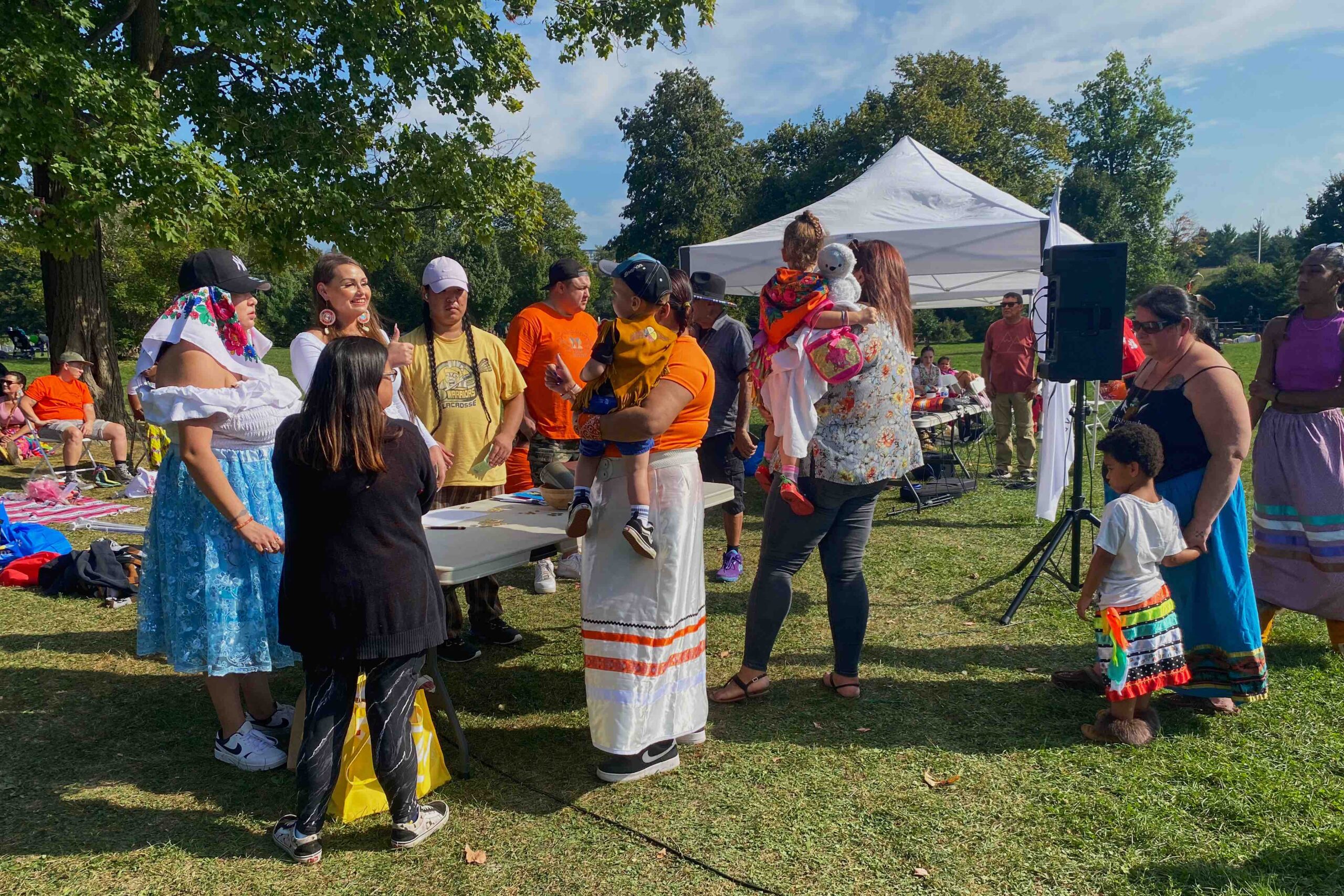
“We want everyone to be at the powwow, but we do want to highlight young people,” Fayant said.
She added she was pleasantly surprised to see a “full house” with hundreds of attendees.
“I’m really, really grateful to the community for showing up and showing young people that they support them,” Fayant said.
The powwow set-up at the park was circular, an important symbol in many Indigenous cultures. Circles can represent nature’s interdependence through the cyclical nature of life and its many forms of healing.
In this spirit, dancers circled the drummers set up in tents at the centre of the park. Beyond that, an array of lawn chairs and picnic blankets surrounded the dancers.
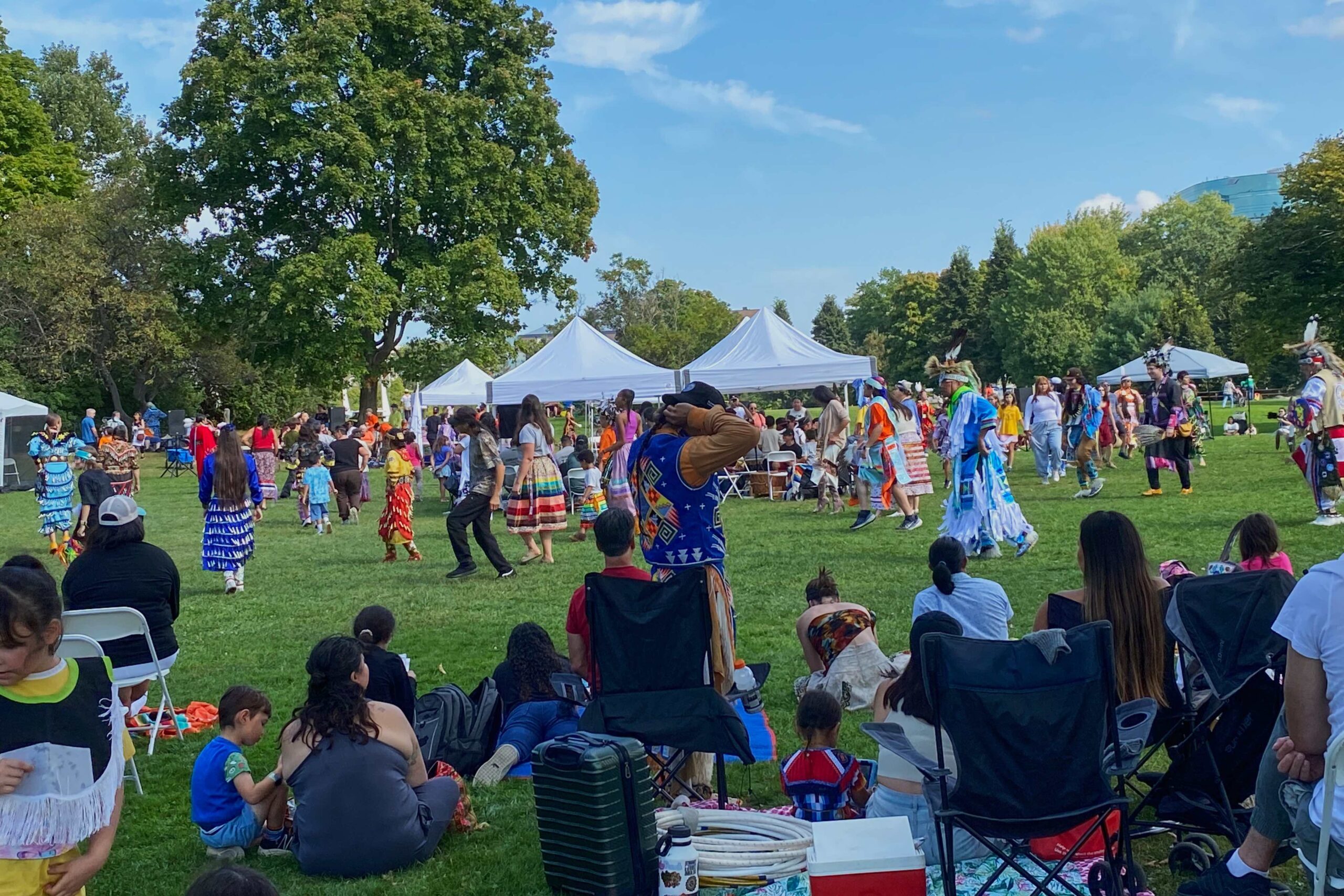
“It can get really heavy on our community, so we wanted a time to celebrate,” Fayant said.
Grand entries open powwow ceremonies. It featured all the dancers, led by feather carriers, staff carriers and flag carriers, as they enter the main dancing area.
Fayant said that although feather and staff carriers are typically older and more experienced community members, the responsibility was given to younger people at this powwow.
Powwow committee member Brittainy Jones, 28, was A7G’s feather carrier.
“When I was first asked, I was like, ‘Oh, I’m gonna cry,’” Jones said. “But it made me feel very good, very proud to be part of something big.”
Youth drum groups, including Young Tribe, joined Grammy-nominated groups Northern Cree and Young Spirit in the centre drumming tents. The groups took turns drumming and singing powwow music throughout the six-hour event, leaving little room for silence between songs.
The music included intertribal songs, which welcomed dancers from all nations and backgrounds. It also included specials, which feature a specific cultural dance tradition, such as hoop dancing.
“The drum is a really important part of a lot of people’s healing, and so to have those young people in those spaces is really powerful,” Fayant said.
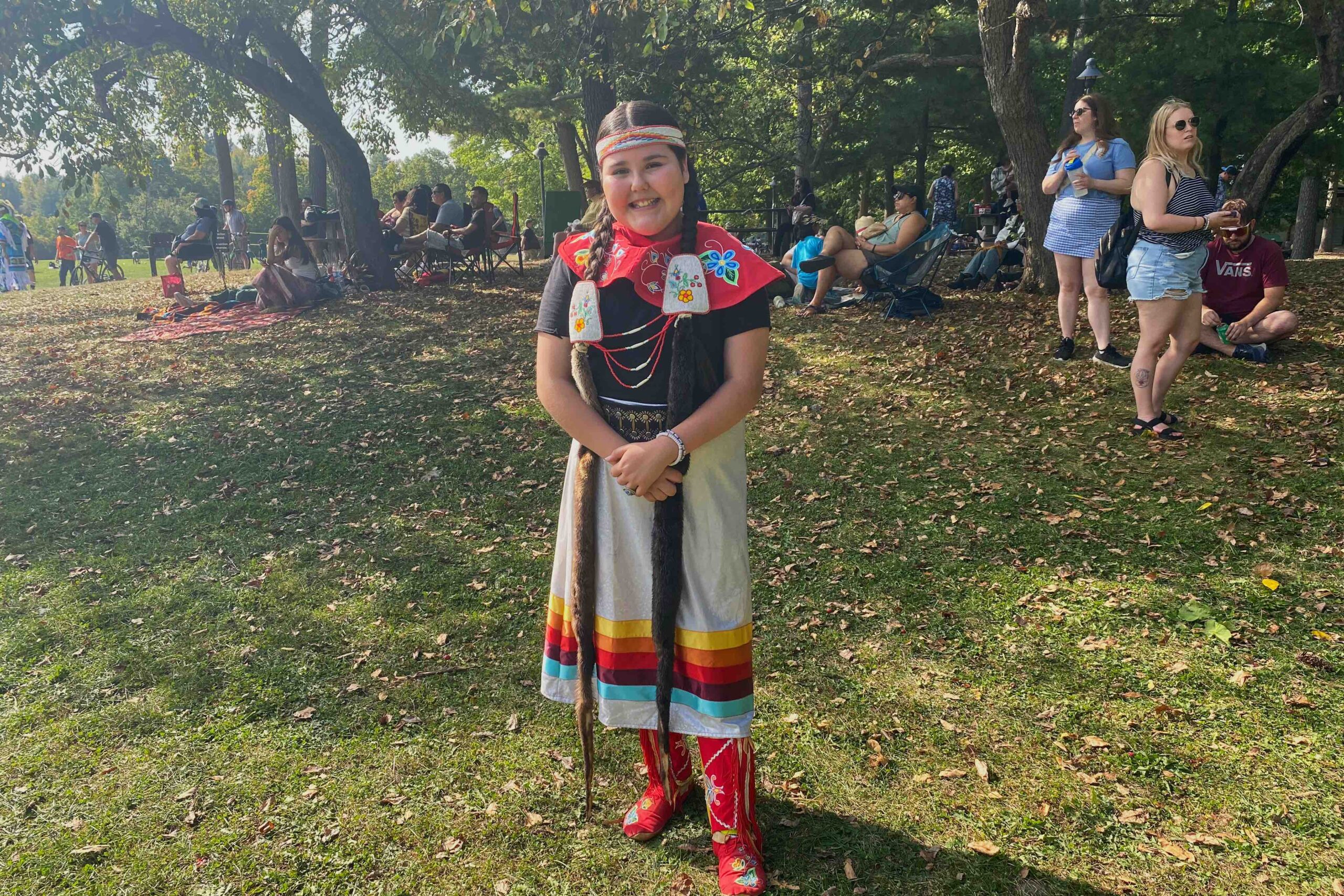
Challa Chief, 12, and her family drove two hours from Kitigan Zibi in Quebec to be at the powwow. She said she was most excited to dance to Northern Cree and Young Spirit, drummers her family listened to the whole drive down.
“It’s just so nice to be around everybody and look at all the dancers and it’s just so important to participate in cultural learning,” she said.
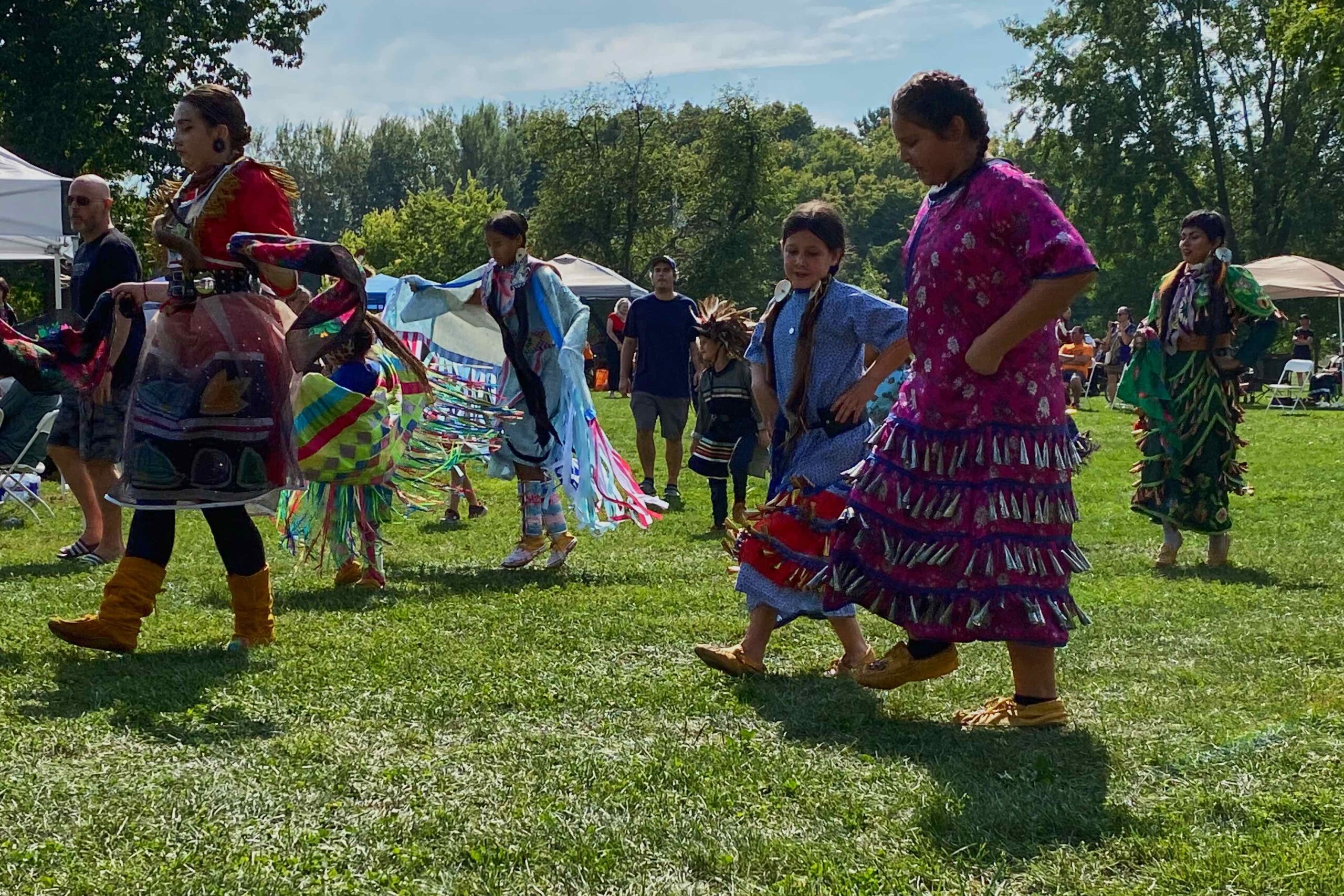
“There was a time when you couldn’t really do your traditions, so I want them to be familiar with it and I want them to pass it on to my future generations,” Kakepetum said.
She said dancing, which is used for healing, is an important part of this.
“When you’re dancing, you’re in the zone,” she said. “You want to have good thoughts. It’s like everything around me disappears, almost.”
After success during the inaugural event, Jones said she hopes for another A7G powwow soon.
“As long as that’s what the community wants and that’s what the youth want, 100 per cent, we’re all in,” Fayant said.





